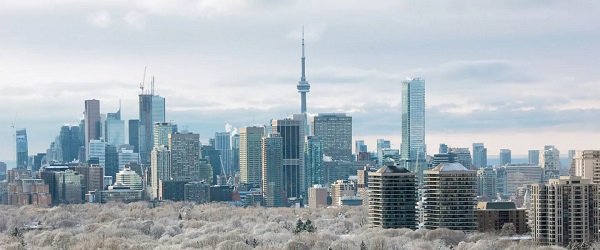Alberta
Red Deer Polytechnic homecoming featuring athletic, social, and academic events

As a way to connect with alumni, prospective and current students, employees and community members, Red Deer Polytechnic will host its inaugural Homecoming from October 20-22, 2022, on its main campus.
“The past few years have been challenging to fully engage with our stakeholders because of COVID-19, so we are extremely excited to open our doors for Homecoming,” says Stuart Cullum, President of Red Deer Polytechnic. “The range of events appeal to a diverse audience and it’s a great opportunity for the Polytechnic to showcase what we have to offer. With growing program offerings taught by industry experts in modern facilities, we are a premier polytechnic institution that serves not only in the region, but the entire province.”
Red Deer Polytechnic is intricately interconnected with the community in numerous ways. Students, staff and faculty make an important impact on the community through applied learning and research activities, community service and volunteerism, and as professionals.
At the same time, community members and alumni also contribute to learning experiences and the institution’s growth in many ways. This includes advocacy for post-secondary education, along with volunteering and enhancing the students’ education by providing experiential learning opportunities and support. Together, members of the Red Deer Polytechnic community contribute to the continued economic, intellectual, social and cultural development of central Alberta and province.
The network of Red Deer Polytechnic alumni continues to grow in numbers and impact.
“At Red Deer Polytechnic, we are extremely proud of our 58-year history, including the 80,000 alumni who are leaders in their professions and communities,” says Richard Longtin, Vice President, External Relations. “The valuable connections with alumni and community members enrich the Polytechnic, region and Alberta. Homecoming is an ideal opportunity for alumni to reconnect with one another, to meet current students and faculty, to interact with community members and to see how the institution has evolved as Red Deer Polytechnic.”
A variety of academic, athletic, cultural and social events will be held at the Polytechnic over the three days.
One of the Homecoming events is Palate: A Taste of Local, formerly known as Fine Wine and Food Tasting Festival. This elegant tasting event provides opportunities for guests to explore local, hand-crafted food and beverages. The new name reflects the increased diversity of items offered and the event’s mission to celebrate regional businesses and ingredients.
Open House provides an opportunity for prospective students to explore Red Deer Polytechnic’s programs and services, to tour main campus, to participate in interactive activities, and to apply for one of the institution’s more than 80 programs. Community members are also invited to explore main campus and learn more about the Polytechnic’s offerings. At Open House, application fees to study in 2023 will be waived.
Here is a summary of the Homecoming events:
Thursday, October 20
- Palate: A Taste of Local | Cenovus Learning Commons | 7 pm
- Philosopher’s Café | Library Information Commons | 7 pm
- Queens and Kings Basketball Home Opener | Fas Gas – On The Run Gymnasium | 6 and 8 pm
Friday, October 21
- Free 30 Minute Fitness Sessions | Collicutt Performance Fitness Zone | Cycle 6 pm | Fitness Step 6:45 pm
- Library 20th Anniversary Celebration | Library Information Commons | 7 pm
- Kings Hockey | Gary W. Harris Canada Games Centre Arena | 7 pm
Saturday, October 22
- Open House | Main Campus | 9 am – 12 pm
- Queens and Kings Soccer | Red Deer Polytechnic Main Field | 12 and 2 pm | tickets are not required
More information about Red Deer Polytechnic’s Homecoming is available online.
Featured Events
Palate: A Taste of Local
Cenovus Energy Learning Common
Thursday, October 20 | 7 – 10 pm
The Red Deer Polytechnic Alumni Association is proud to introduce a new, elevated rendition of our annual signature event – Palate: A Taste of Local.
Philosopher’s Café
Library Information Common
Thursday, October 20 | 7 pm
Hosts: Dr. Stephen Brown & Dr. Carrie Dennett
No philosophical training or expertise required.
Free 30 Minute Fitness Sessions
Collicutt Performance Fitness Zone
Friday, October 21 – Cycle at 6 pm | Fitness Step at 6:45 pm
Saturday, October 22 – Fitness Step at 2 pm | Cycle at 2:45 pm
Queens and Kings Basketball Home Opener
vs St. Mary’s University Lightning
Fas Gas On The Run Gymnasium
Friday, October 21
Queens at 6 pm | Kings at 8 pm
Library 20th Anniversary Author Reading
Library Information Common
Friday, October 21 | 7 pm
Featuring Jenna Butler, Joan Crate, Leslie Greentree, and Rod Schumacher.
NOTE: The Library will be open exclusively for this event. No other access or services will be available during this event.
Kings Hockey vs SAIT Trojans
Gary W. Harris Canada Games Centre Arena
Friday, October 21 | 7 pm

Open House
Main Campus
Saturday, October 22 | 9 am – Noon
Join us for program and service information, interactive activities, and tours of our main campus and the Gary W. Harris Canada Games Centre.
Apply in person to Winter 2023, Spring 2023 or Fall 2023 programs at Open House and we will waive the application fee!
Alberta
This new Canada–Alberta pipeline agreement will cost you more than you think


Canada and Alberta’s new net-zero energy deal is being promoted as progress, but it also brings rising costs. In this video, I break down the increase to Alberta’s industrial carbon price, how those costs can raise fuel, heating, and grocery prices, and why taxpayer-funded carbon-capture projects and potential pipeline delays could add even more. Here’s what this agreement could mean for Canadians.
Watch Nataliya Bankert’s latest video.
Alberta
Alberta will defend law-abiding gun owners who defend themselves

Alberta’s government will introduce a motion under the Alberta Sovereignty within a United Canada Act to defend law-abiding firearms owners.
A new motion under the Alberta Sovereignty within a United Canada Act will, if passed by the legislature, instruct all provincial entities, including law-enforcement agencies such as municipal police services and the RCMP, to decline to enforce or implement the federal gun seizure program. The motion also makes clear that Albertans have the right to use reasonable force to defend themselves, their families and their homes from intruders.
This builds on the steps Alberta has already taken to reduce crime, strengthen public safety and assert provincial jurisdiction over firearms. This includes passing the Alberta Firearms Act to establish the Alberta Chief Firearms Office, along with the Alberta Firearms Regulation and the Seizure Agent and Provider Licensing Regulation.
“It’s time for Ottawa to stop targeting the wrong people. Albertans have the right to protect their homes and their families. No one should hesitate to defend themselves when faced with a threat at their own doorway. Law-abiding citizens, hunters, farmers and sport shooters are not the source of violent crime, yet the federal government wants to confiscate their property while illegal guns pour across our borders. Alberta will not stand by while responsible gun owners are treated like criminals. This motion is about using every legal tool we have to protect their rights, uphold public safety and push back on federal overreach into provincial jurisdiction.”
“When someone breaks into your home, the law recognizes that you have enhanced rights to protect yourself and your family. Alberta is making that principle unmistakably clear: lawful, reasonable self-defence will be respected, not criminalized.”
“As an experienced former law enforcement officer, law-abiding gun owners have never been an issue, in my own personal experience, nor has there been any data to support that law-abiding gun owners are the ones that are committing violent gun crimes. The illegal guns that you see being used by criminals are typically being smuggled in from the United States. The federal government should help us strengthen the border, helping us to stop illegal guns from coming into Canada. This would further enhance safety and security for the people of Alberta and Canada as opposed to going after lawful gun owners.”
Under the Alberta Firearms Regulation, municipalities, law enforcement and police commissions must obtain approval from Alberta’s Minister of Justice before accepting funding to participate in the Assault-Style Firearms Compensation Program.
“Misguided federal initiatives such as the handgun transfer ban and the Order in Council firearms prohibitions of 2020, 2024 and 2025 have had a devastating impact on the safe, legitimate activities of the firearms community and the businesses that support it, while having no discernible effect on criminal activity. I am proud to see that the Alberta government is pushing back and supporting lawful firearms owners through these measures.”
“Licensed gun owners and all Albertans can rest assured that their government, under the leadership of the UCP, is laser focused on protecting law abiding citizens while prioritizing real public safety.”
“The Alberta Hunter Education Instructors Association will continue to support our government and the Alberta chief firearms officer in our joint quest to use safety training and education as the key tools to ensure we have safer streets and communities. Safe and responsible use of firearms in Alberta is a key part of our heritage, culture, and our rich and precious heritage.”
Key facts:
- Pursuant to the Attorney General’s recent guidance protocols, Alberta’s prosecutors will decline to prosecute offences under the federal gun seizure program when it is not in the public interest.
- The Attorney General’s recent guidance protocol directs prosecutors to not prosecute home defence offences when it is not in the public interest.
- Total spending on the federal Assault-Style Firearms Compensation Program is expected to exceed $750 million.
- The firearms motion considers the Alberta Bill of Rights, the Constitution Act, 1867 and the Criminal Code.
- Currently 10 per cent of adult Albertans are licenced to use and own firearms. There are 381,900 firearms licences in Alberta.
- Alberta has 638 licensed firearms businesses, 138 shooting ranges and 91 shooting clubs.
-

 Business19 hours ago
Business19 hours agoRecent price declines don’t solve Toronto’s housing affordability crisis
-

 Daily Caller18 hours ago
Daily Caller18 hours agoTech Mogul Gives $6 Billion To 25 Million Kids To Boost Trump Investment Accounts
-

 National17 hours ago
National17 hours agoCanada Needs an Alternative to Carney’s One Man Show
-

 Alberta2 days ago
Alberta2 days agoNew era of police accountability
-

 National2 days ago
National2 days agoMedia bound to pay the price for selling their freedom to (selectively) offend
-

 C2C Journal2 days ago
C2C Journal2 days agoLearning the Truth about “Children’s Graves” and Residential Schools is More Important than Ever
-

 armed forces2 days ago
armed forces2 days agoGlobal Military Industrial Complex Has Never Had It So Good, New Report Finds
-

 Automotive4 hours ago
Automotive4 hours agoPower Struggle: Governments start quietly backing away from EV mandates











